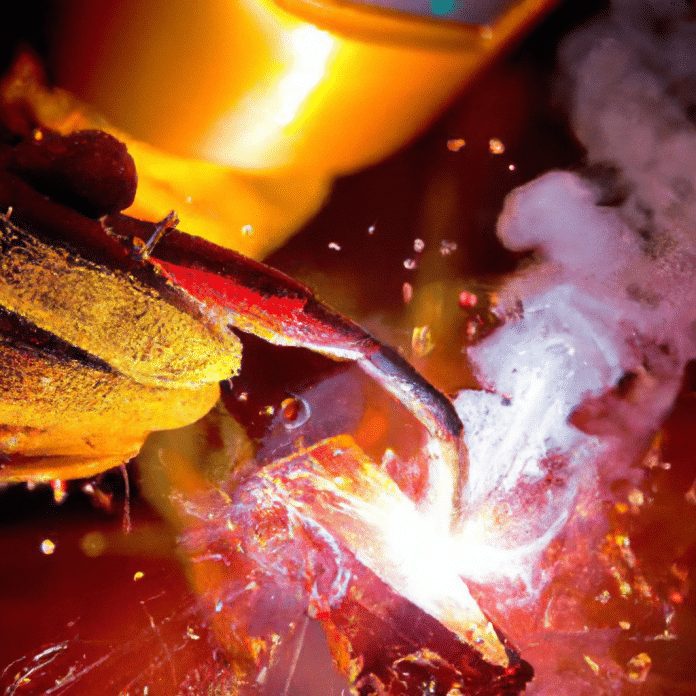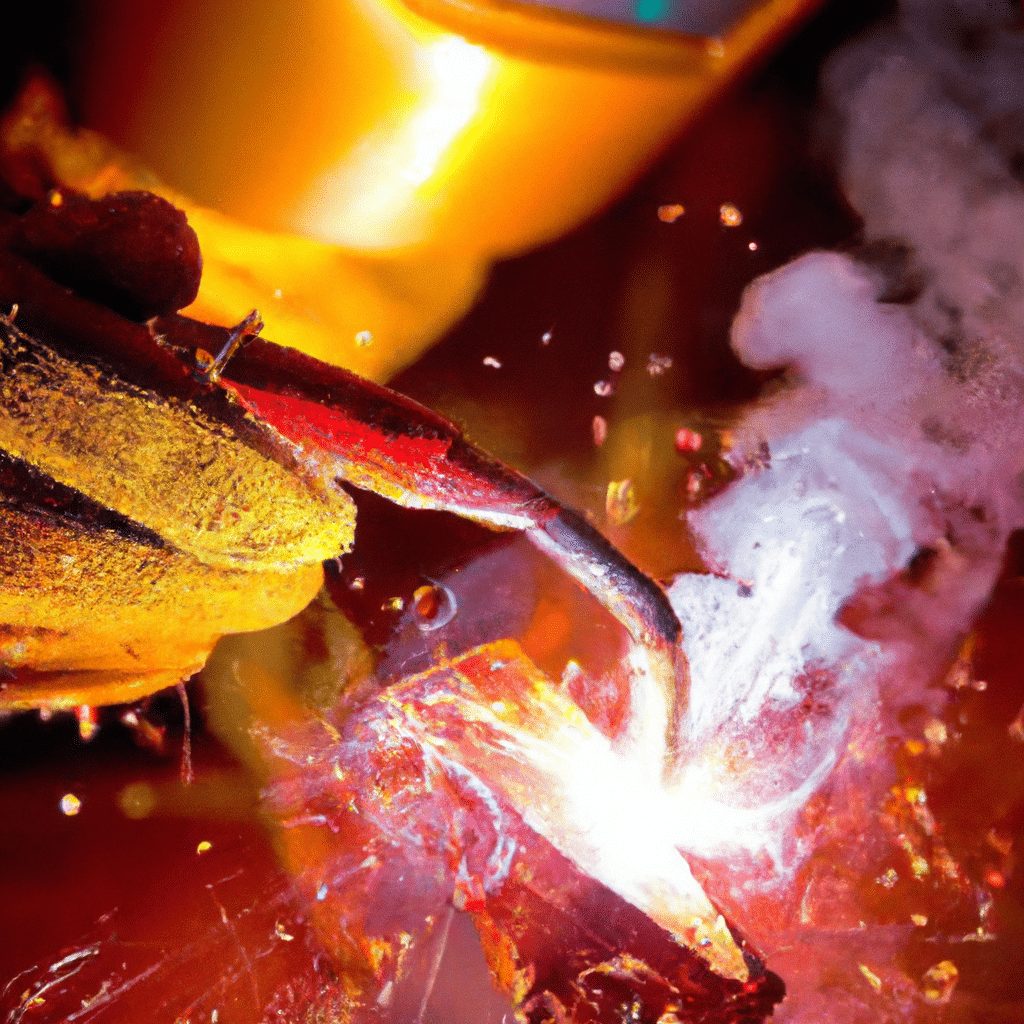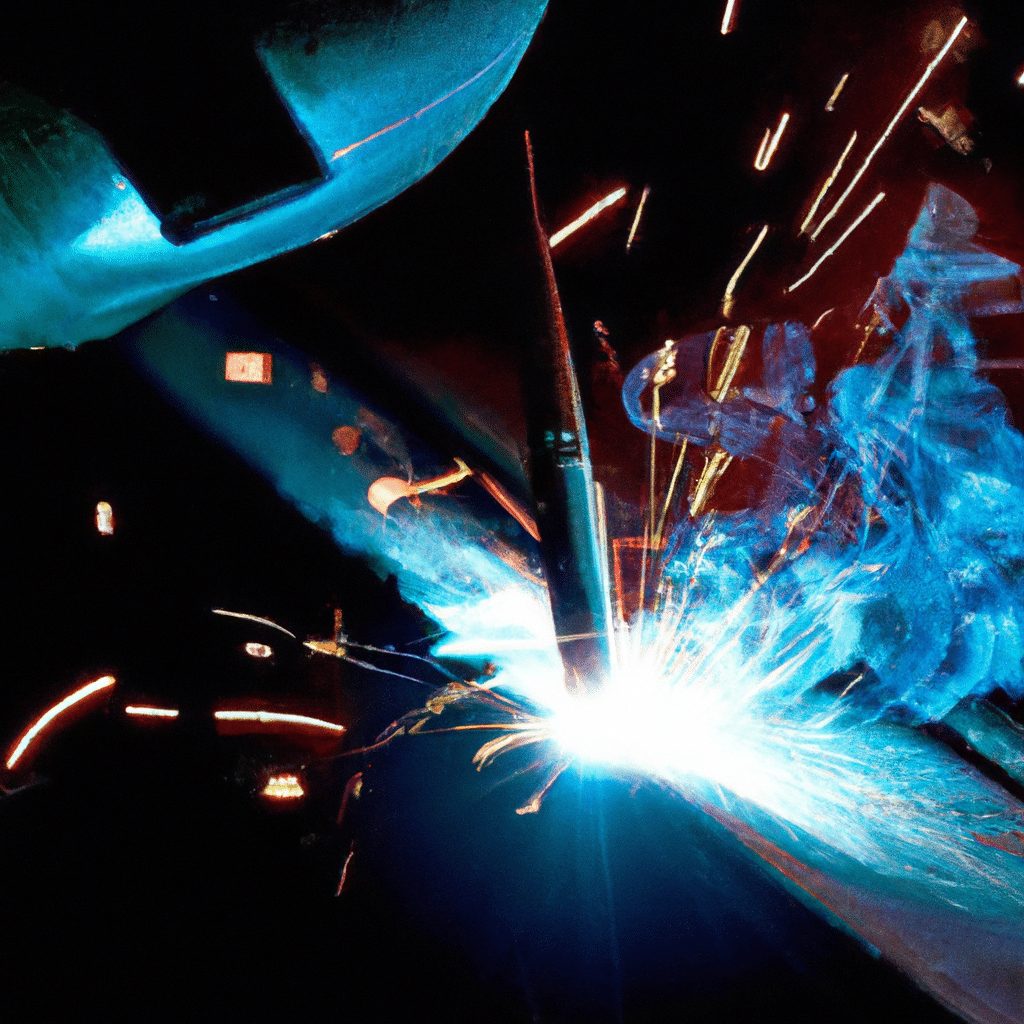Let’s talk about something fascinating today – the possibility of welding with a soldering iron! If you’ve ever wondered whether this sleek little tool can be used for some serious welding, then you’re in for a treat. In this article, we’ll explore the potential of a soldering iron when it comes to joining metals, and uncover whether it holds the secret to becoming a mini welder. So buckle up, because we’re about to embark on a journey that combines the worlds of soldering and welding, all in the name of curiosity and exploration!
Review contents
Can You Weld With A Soldering Iron?
Understanding the Difference Between Welding and Soldering
When it comes to joining metals together, welding and soldering are two common techniques that are often used. While they may seem similar, there are key differences between the two processes. Understanding these differences is crucial in determining whether or not you can weld with a soldering iron.
Welding is a process that involves melting two or more metal pieces and joining them together. This is typically done using high temperatures and specialized equipment. The heat generated during welding causes the metal pieces to melt and fuse together, creating a strong bond. Welding is commonly used in construction, automotive, and manufacturing industries.
On the other hand, soldering is a process that involves melting a solder alloy to join two metal pieces. Unlike welding, soldering uses a lower melting temperature. The solder acts as a filler material, flowing between the gaps of the metal pieces and creating a bond as it solidifies. Soldering is commonly used in electronics, jewelry making, and plumbing.
Exploring the Process of Welding
Welding is a complex process that requires specific equipment and expertise. It typically involves three essential components: the welding machine or power source, the electrode or filler material, and the workpiece.
The welding machine generates high temperatures, often using electricity or a flame, to melt the electrode and workpiece. The electrode, which is made of a compatible metal alloy, is used to create the weld joint. As it melts, the electrode becomes the filler material that fills the gap between the workpiece, creating a strong bond.
Welding can be performed using various techniques, such as arc welding, gas welding, and laser welding. Each technique has its advantages and is suitable for different applications.
Exploring the Process of Soldering
Soldering, unlike welding, is a considerably simpler process that can be done with minimal equipment. The primary tools required for soldering are a soldering iron, solder wire, and flux.
The soldering iron is a pen-like tool that is heated up to a specific temperature. The solder wire, which is made of a lead or lead-free alloy, is applied to the joint area. The flux, a chemical compound, is used to clean the metal surfaces and promote the flow of solder.
Once the soldering iron is heated, it is applied to the joint area. The heat from the iron melts the solder wire, allowing it to flow and create a bond between the metal pieces. As the solder cools, it solidifies and forms a strong joint.
Can You Use a Soldering Iron for Welding?
While soldering and welding may seem similar, it is important to note that they are distinct processes with different capabilities. Therefore, using a soldering iron for welding is not recommended.
Soldering irons are designed specifically for soldering applications, not for welding. The temperature produced by a soldering iron is considerably lower than what is required for welding. The limited heat output of a soldering iron makes it unsuitable for melting metal pieces and achieving a proper weld joint.
Furthermore, the type of bond produced by soldering is not as strong as those achieved through welding. Soldering joints are generally more suitable for applications that require less strength and resilience, such as electronic circuit boards.
The Limitations of Using a Soldering Iron for Welding
When attempting to use a soldering iron for welding, there are several limitations and challenges that one might encounter. Firstly, the low temperature of the soldering iron may not provide enough heat to properly melt and fuse the metal pieces together. This can result in weak and unreliable weld joints.
Additionally, soldering irons are typically not designed to provide the necessary power and control required for welding thicker metals. The lower heat output of a soldering iron may make it incapable of effectively penetrating and bonding thicker materials.
The Advantages of Using a Soldering Iron for Welding
While using a soldering iron for welding is generally not recommended, there are some specific situations where it can be advantageous. Soldering irons are commonly used in jewelry making and delicate electronic repairs, where the metal pieces being joined are thin and require a low heat input.
In these scenarios, the lower temperature produced by a soldering iron can be beneficial. It allows for precise control and prevents excessive heat from damaging the delicate components or materials being worked on. However, it is important to consider the limitations and ensure that the application is suitable for soldering rather than welding.
Safety Precautions When Using a Soldering Iron for Welding
When using a soldering iron for welding, it is essential to take appropriate safety precautions. Although soldering irons operate at lower temperatures compared to welding equipment, they still pose risks and should be handled with care.
First, always work in a well-ventilated area to avoid inhaling harmful fumes emitted by flux and solder. Use protective eyewear and gloves to protect yourself from potential splatters and burns. Additionally, ensure that the work surface is stable and non-flammable to prevent accidental fires.
How to Use a Soldering Iron for Welding
If you find yourself in a situation where a soldering iron is the only available tool for joining metal pieces, here are some general steps to follow:
-
Prepare the metal pieces: Clean the surfaces to be joined by removing any dirt, rust, or oxidation. Apply flux to promote the flow of solder.
-
Heat the soldering iron: Turn on the soldering iron and allow it to reach the appropriate temperature for the solder alloy you are using. Refer to the manufacturer’s guidelines for the specific temperature.
-
Apply the solder: Touch the tip of the heated soldering iron to the joint area, and then apply the solder wire. The heat from the soldering iron will melt the solder, allowing it to flow and bond the metal pieces.
-
Allow to cool: After applying the solder, remove the soldering iron and allow the joint to cool and solidify. Avoid disturbing the joint until it has fully hardened.
Alternative Methods for Welding
While using a soldering iron for welding may not be ideal, there are alternative methods available that can produce stronger and more reliable weld joints. These methods include arc welding, gas welding, spot welding, and laser welding, among others.
Each welding method has its advantages, and the choice depends on factors such as the type of metals being joined, the thickness of the materials, and the desired strength of the weld joint. It is advisable to consult with a professional welder or refer to welding guidelines for specific applications.
Conclusion
In conclusion, while soldering and welding may appear similar, they are distinct processes with different capabilities. Using a soldering iron for welding is generally not recommended due to the low heat output and the resulting weaker bond. Although a soldering iron can be used in specific situations, it is important to understand its limitations and safety precautions. When it comes to welding, it is best to use specialized welding equipment and techniques to ensure strong and durable weld joints.





























